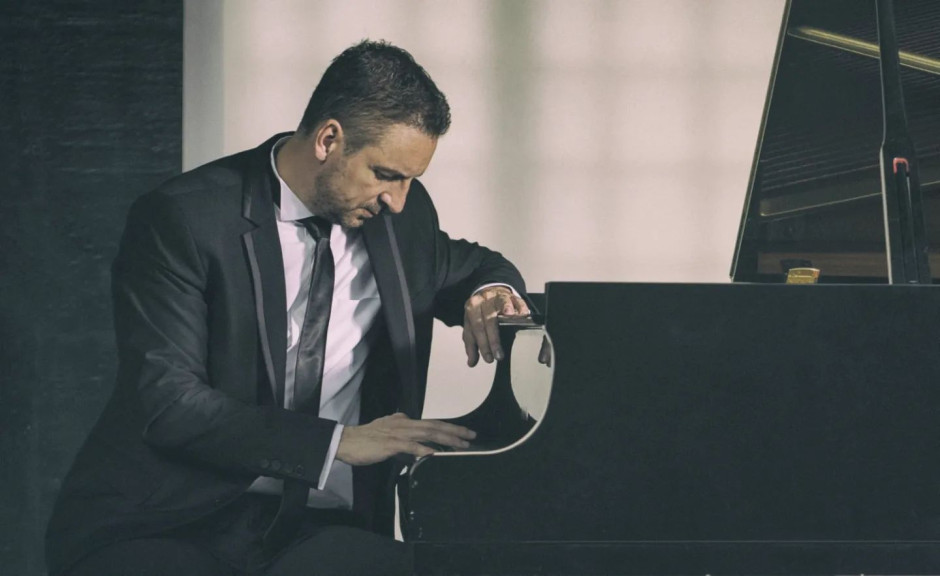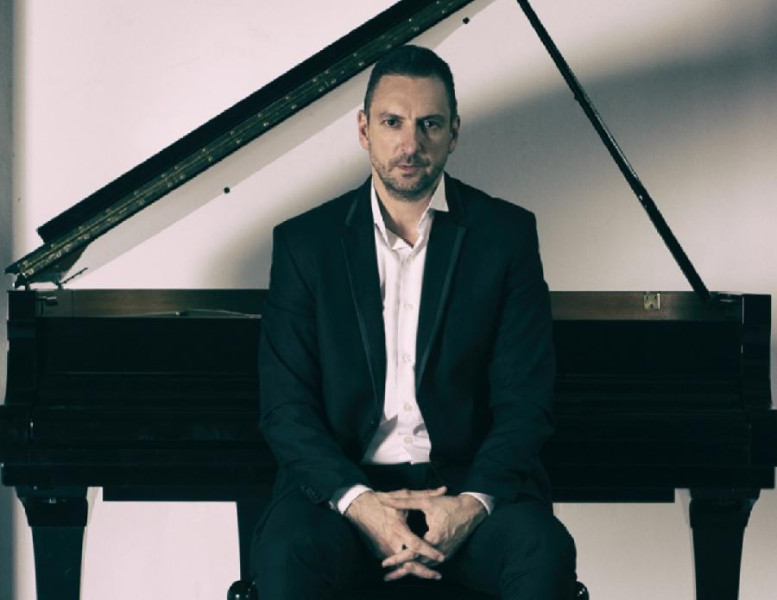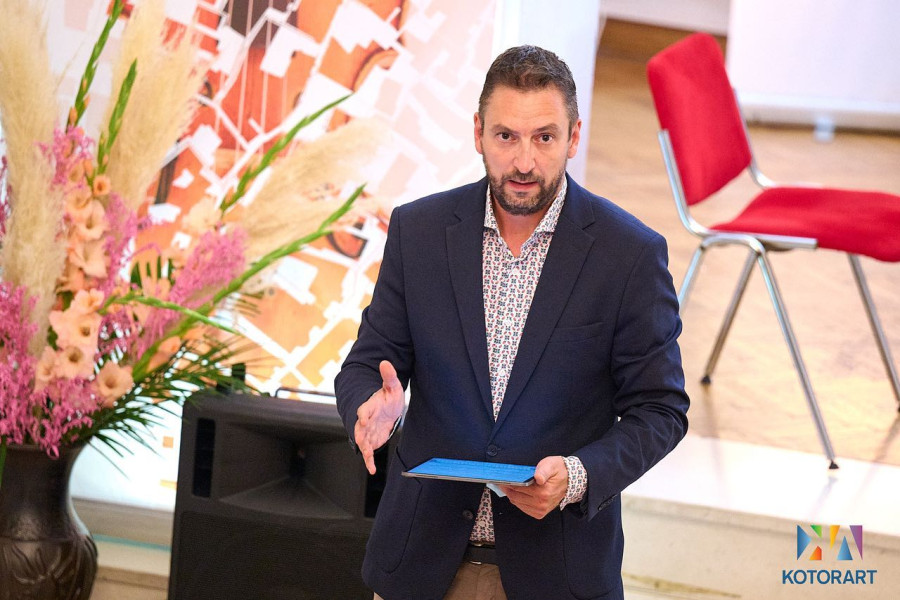AN INTERVIEW Ratimir Martinović: KotorArt has always built its dreams sustainably, without losing contact with reality
One of the founders of the KotorArt Festival, the distinguished pianist and university professor Ratimir Martinović points out that the Festival has fought for the status it has in Montenegrin society. In an interview for the RTCG Portal, he mentions that at the very beginning of this artistic story the goal was to restore at least part of the splendor of the culture of the town of Kotor, through a representative festival of art music, and they have succeeded, but he notes, as in everything else – it is not difficult to get at the top, but to stay there.
Martinović reminds that the program of the Festival is very diversified and offers selection of various renowned soloists and ensembles, European cooperation projects, programs related to musical heritage, young talents and presenting different musical trends. All this forms a rich and high-quality program which, as he says, is more important in the long term than various musical fireworks, which Montenegro is prone to, and after which the previous darkness only becomes deeper and heavier, and the dream of a bright reality only more unattainable.
KotorArt, he says, has always built its dreams sustainably, without losing touch with reality and it will continue in doing so.
You started the story of KotorArt in 2002 as an independent cultural initiative. What was your plan and goal and are you satisfied with what you have achieved?
The goal was to restore at least part of the splendor of the culture of the town of Kotor, and the plan was to do it through a representative art music festival. I am partially satisfied with what we have achieved, having realized how crucially important is the issue of pursuing the processes that will last for as long as there is us, cities, and countries, and all other larger or smaller myths and realities that we create and live.
The event is recognizable not only in Montenegro, but also in the region and beyond. How difficult was it all these years to attract artists from the surrounding area and from around the world, to be part of this story and to contribute to the popularity of the event and art music in general?
Good news travels fast, and bad news even faster. It is fortunate that we create a festival in the domain of culture and art, because values are easily recognized and communicated. By values, I do not mean only aesthetic ones, although they are not unimportant either, but above all ethical ones. Correct, good and well-grounded attitude divide the whole world today more than ever. In our world of art, these issues very easily reach a consensus that can be paraphrased in a simplified way as a popular advertisement says: either you are, or you are not – a man.
How willing were the municipality and the state to help KotorArt and could this help be better? What would that mean for this event?
That support vacillated depending on the decision maker. In small systems like Montenegro, personal attitudes and experiences often prevail over profession, public interests, plans, strategies, talents, potentials and results. We have received continuous support from the colleagues and professionals from our field from all meridians, as well as a certain local help. Our initial strategy was not to prove ourselves locally but primarily regionally and globally. Thus, on a local level, what you do is perceived differently. This indicates some other circumstances concerning competences, but that is not the case only in the sphere of culture and events. It is the general situation.
I have said more than once that Montenegro must leave room for international professionals who could improve the situation in many areas. Anyway, KotorArt has fought for the status it has in Montenegrin society, and we will responsibly and dedicatedly try to justify it year after year. As in everything else – it is not difficult to get at the top, but to stay there.
You pay special attention to young artists, through their debuts at the Festival, so they have the opportunity to collaborate with eminent world artists, to improve their skills. How important is this segment of the Festival and why?
It is unquestionable that the world rests on the young. I vividly remember my first professional treatment and a paid concert performance. Such experiences build you up, put wind in your sails, support self-esteem and strengthen faith. Of course, even not agreeing to what is offered to you is equally edifying. It is important to encourage both in young people. With such a mission, we have started a series dedicated to the young.
This year, we have started the Youth Forum. It is a platform where these young people, mostly participants of the previous KotorArt Talents series, and today mature young people who have gained professional and life experiences in other, larger European environments, have the opportunity to publicly verbalize their comparative observations and present ideas about the needs of their generation. If we do not change, if we do not develop, it means that we are stagnating, and if it lasts, we are regressing. Intertwining the needs of young people and motivation for new things, with the experience and maturity of older colleagues, seems to me to be a good model for sustainable development and integrity, the backbone of the continuity of any sphere of activity.
From the beginning, the initiative was for this art music festival to be open to the idea of expanding the program. What have you planned in this regard this year?
KotorArt was founded as an art music festival 22 years ago, with the openness to join other artistic disciplines. In the domain of music, we have developed a highly professional organization, raised the level of programs, communications and financing. All these aspects are not easy to follow. We offered our advice and support to everyone who wanted it, and they most often meant a change of paradigm, which is not always easy, although it is often inevitable. This year, in addition to various and rich musical programs, the Philosophers’ Square will be organized for several days with a focus on the issues and roles of women in Montenegrin society. From July 1 to July 12, the Children’s Theater Festival, which is in the process of being transformed into a public institution, will traditionally be organized.
This summer, at KotorArt Don Branko’s Music Days, you will perform with your longtime pedagogue and friend, pianist Kemal Gekić. The concert program includes compositions by Vasilije Mokranjac. Is it the need for the audience to get to know our artists, whose works can offer the same pleasure as those of the famous composers whose music we are used to listen to at big festivals?
Kemal and I will perform at separate concerts and with different programs. Vasilije Mokranjac is anything but famous. He remained in the shadow of his cousin, the famous Stevan Stojanović Mokranjac. Vasilije, whose birth centenary is celebrated this year, is one of the greatest composers of this part of the planet. I am not only talking about his piano, but also his symphonic oeuvre. For several years, I have been dedicated to studying and performing his opus, which I recorded in its entirety and premiered a few years ago. With a unique musical language, intense and evolutionary to the level of Beethoven, this opus, according to the undivided opinion of performers and musicologists, deserves incomparably greater appreciation and treatment by his home country – Serbia, in parallel with the presentation on all possible meridians, including Montenegro. It is one of my permanent artistic missions.
The performance of world-renowned violinist Nemanja Radulović was also announced. Who else can we expect?
Nemanja is a very dear friend and frequent guest of our festival. KotorArt with the Don Branko’s Music Days program has been offering Kotor a month of intense festival life for years. Perhaps I would be the happiest if the Festival lasted significantly shorter, if in 10-15 days we focused exclusively on the biggest world names that we brought to our town, country and sometimes the region. Our program is very diversified and offers various renowned soloists and ensembles, European cooperation projects, programs dedicated to musical heritage, young talents, presentation of different musical directions, intensive cooperation with embassies, national and foreign institutions, and long-term partners. All this forms a rich and high-quality program, which is more important in the long term than various musical fireworks, which Montenegro is prone to, and after which the previous darkness only becomes deeper and heavier, and the dream of a bright reality only more unattainable. Examples of concerts by Madonna or the Rolling Stones on Jaz, as well as numerous others, are glaring examples of what I am talking about. One evening we are the world stage, and the very next day – double-zero.
KotorArt has always built its dreams sustainably, without losing touch with reality and it will continue in doing so.
Although it is not from your domain of music, how do you perceive the chain of events around the Sea Dance Festival, that is, its cancellation? In general, what is the festival scene like in Montenegro?
Behind the Sea Dance Festival is a renowned team that first of all developed their original idea through the Exit Festival, today one of the most recognizable foreign brands in Serbia. I was present at the first editions of Exit, and followed the evolution of that festival that put Novi Sad on the European festival map. A similar model was applied by the Exit team to the countries of the region through various festivals. One of them was Sea Dance. Personally, I do not often listen to that kind of music, especially because of the crowds at such events. Also, I understood the legal regulations pointed out by the authorities, which led to the decision that the festival can no longer be supported. In the media, it was communicated as a conflict between two opposing views, which is essentially what it was. In my opinion, this is primarily about the public interest.
It is undeniable that Sea Dance brought some economic profit, but the question is whether it is enough to satisfy the public interest. The festivals that I stand behind – KotorArt in Kotor and Wild Beauty Art, which we are developing in the north, have different profiles, not only in terms of content but also in terms of evolution. It was important for us to present those festival stories from the bottom up, that is, that they are organically linked to the spaces in which they take place.
The question is what Montenegro, with all its characteristics related to spatial capacities, tourism ambitions and international branding, wants in the festival sector. This issue requires intersectoral reflection and action. That is the only way we can find answers to what our country needs in the long term, with over 200 festivals that take place in Montenegro, most of which are almost entirely financed by public funds from various levels, local and state.
The mentioned communication between all relevant actors of the public scene from the domain of culture and art, creative industries, tourism and economy, would give a clearer picture of the strategic direction of the development of this, for Montenegro, very potent cultural and economic branch. I hope that in the near future this will also be on the agenda, because in my opinion, Montenegro must build its strategy on the idea of a small, extremely beautiful, ecological and, thus – expensive destination.



